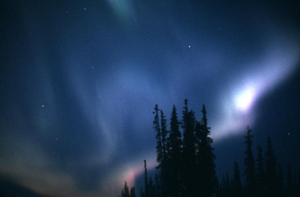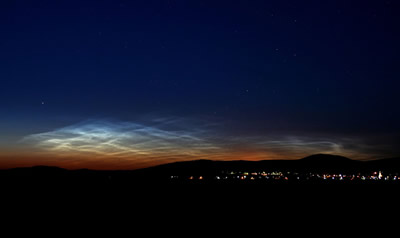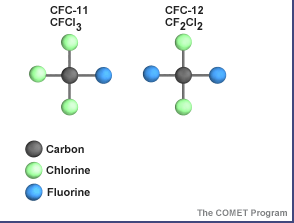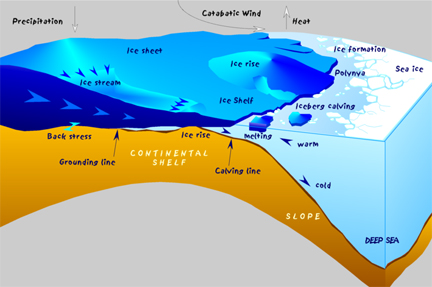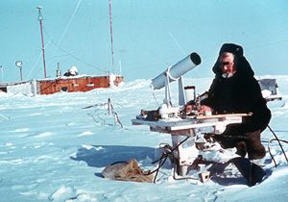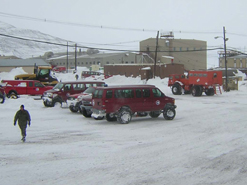Click on image for full size
University Corporation for Atmospheric Research
The Polar Atmosphere
Stuff in the Polar Atmosphere
There are some special things that happen in the atmosphere near the Poles of the planet. Here are a few of them.
Particles from the Sun follow Earth’s magnetic field and this brings them high in the atmosphere above the Poles. All the energy from these particles makes the sky light up like in the picture at the left. This is called the aurora.
High in the sky above where clouds usually are found there are special clouds in the polar regions. They are called noctilucent clouds. They glow blue as the Sun is setting.
The ozone layer of the atmosphere, shields our planet from some harmful rays from the Sun. Some types of air pollution break the ozone apart. This lets more of the harmful rays get to Earth. There are now a number of holes in the ozone layer, including a very large hole over Antarctica.
Less energy from the Sun gets to the poles. That’s why it is cold there. Antarctica is the coldest continent on Earth. It has some of the the harshest weather on the planet with high winds and low precipitation. Arctic weather can also be extreme.
Patterns of the Polar Atmosphere
Near both the north pole and the south pole there is an area of high pressure in the atmosphere. High pressure in the atmosphere means that the little particles, the air molecules, are a bit closer together. Exactly where this place of high pressure is found can change over time. Sometime it can be found right near a pole. Other times it can be found in a ring around a pole. As the high pressure area moves around, patterns in the weather change too. In the north polar region this changing location of high pressure is called the Northern Annular Mode. In the south polar region it is called the Southern Annular Mode.


